How can you bake faster but consume less?
At the heart of concerns in France and Europe, the cost of energy is a real hot topic.
In this article, we'll explain why and how your oven consumes more or less than another, what are the common misconceptions and how to choose the right oven.
What you need to understand: a low-powered oven doesn't consume less energy than a more powerful one.
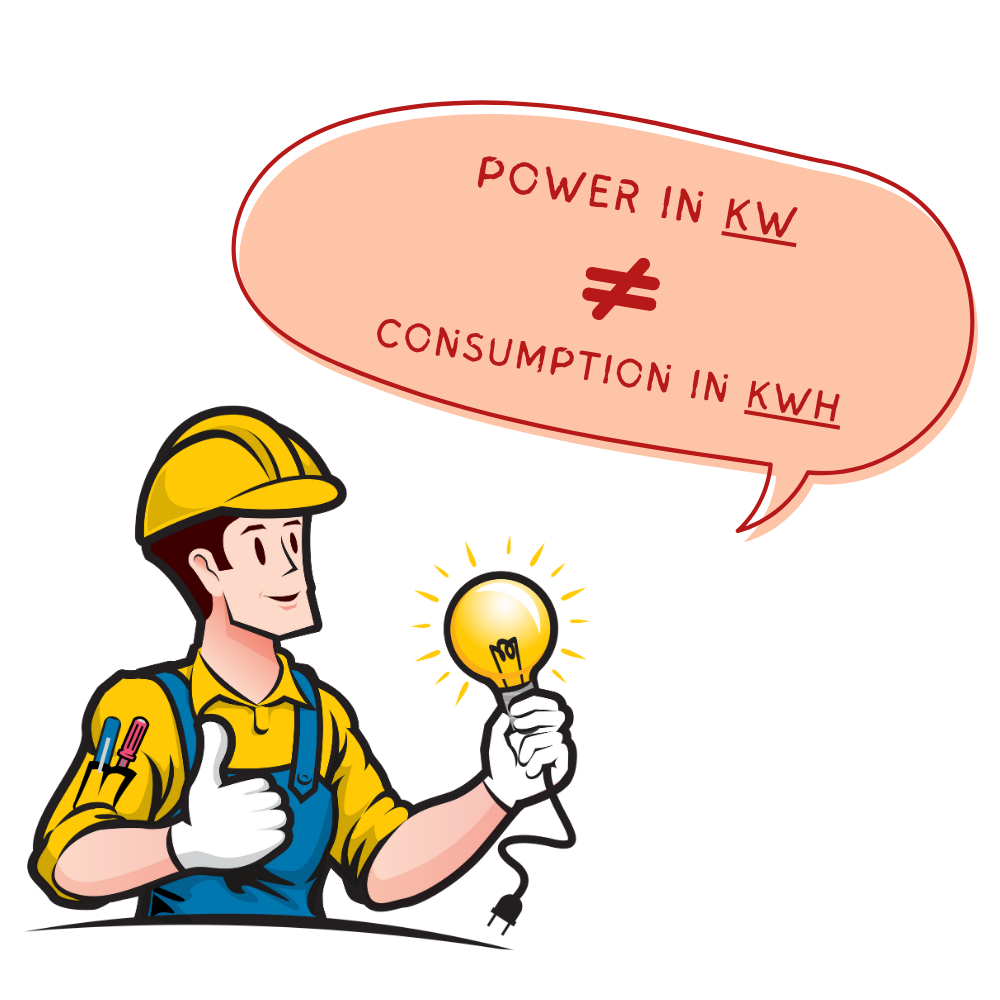
HOW DOES AN OVEN WORK?
The operation of an oven is relatively simple:
A control tells a heating element to heat up to a given temperature. This heat, contained in the baking chamber, enables the dough to bake into beautiful breads, pizzas or pastries.
3 phases :
- A heating phase (to reach the set temperature) - Pre-heating time
- A cooking phase - useful time
- Waiting phases (which must be reduced) - Waste of energy
Waiting phases correspond to ovens that heat up without load. Throughout this phase, the furnace consumes energy to maintain the required temperature. This phase can last from 30% to 75% of the time the furnace is running.
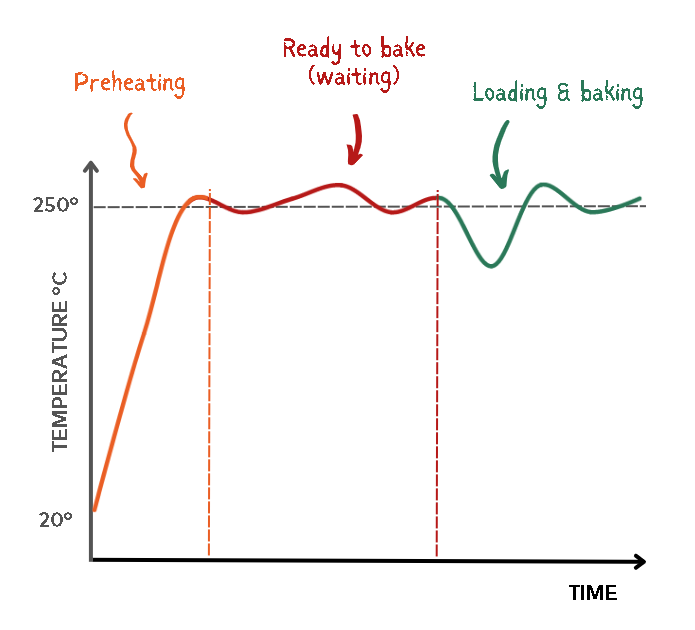
Is there heat loss?
Yes, and it's inevitable. Not just on our ovens, but on all ovens on the market.
The first cause: the glass (treated or untreated) of all ovens is one of the main causes of heat loss (40% of losses).
Second cause: insulation. On a daily basis, our teams work to find the best insulation; the one that will prevent as much heat loss as possible. Insulation depends on two factors: the material used and its thickness (70kg/m3 and 150mm for Pavailler furnaces).
We have chosen to equip our furnaces with some of the best insulation available on the market today: rock wool. As a result, our furnaces rank among the best insulated on the market, and consequently the most economical.
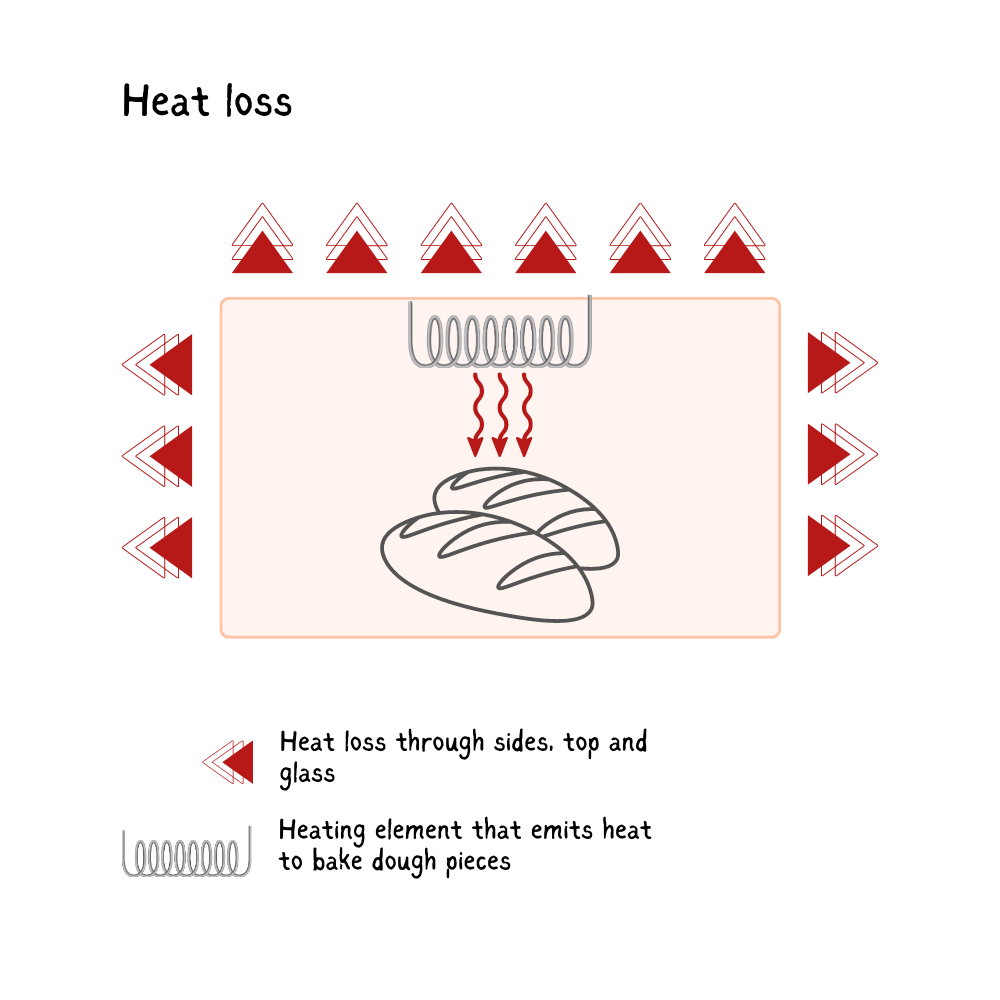
How does a resistor work?
It's a device that transforms electrical energy into thermal energy by the Joule effect. Unlike an electric motor, for example, which transforms electrical energy into mechanical energy (rotation), it dissipates part of this energy as heat. This is called efficiency.
In the case of a resistor, it's this heat that's sought-after, which is why its efficiency is 100%, whatever its design (ceramic, stainless steel, armored, reinforced, cuiracée, triac system, etc.), it's all a question of regulation (Easy Touch on our ovens).
WHAT'S THE RIGHT CHOICE?
Heat more over a shorter period or heat less over a longer period?
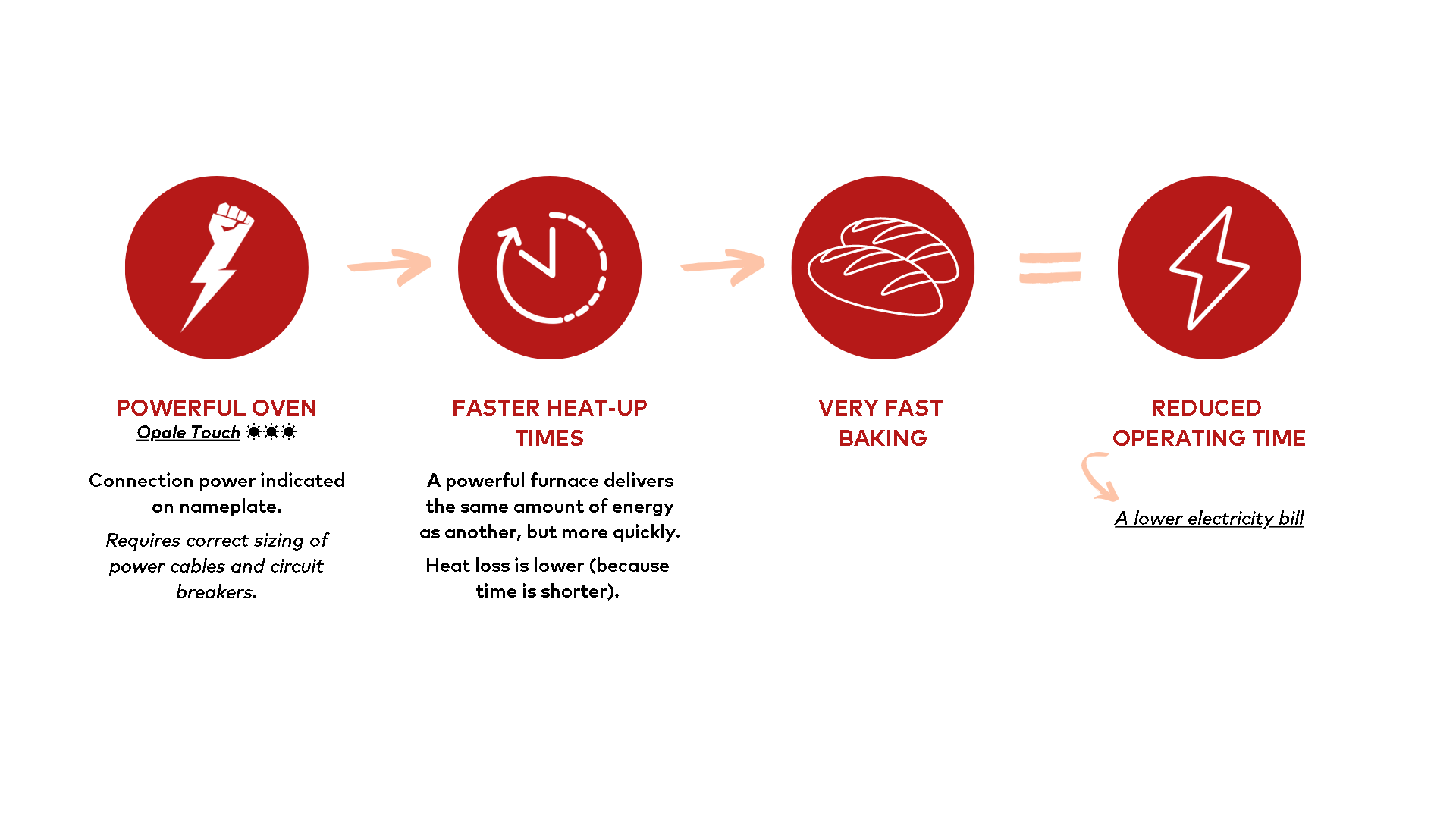
If you look at all the diagrams, you'll see that an oven with powerful resistors can reach the set temperature more quickly.
Once the set temperature has been reached, the resistor cuts out. The heat will drop by a few degrees (due to inevitable losses), then the resistors will come back on until the required temperature is reached, and so on.
Conversely, an oven with weaker resistors will take longer to reach the set temperature. It requires less power (connected power linked to meter (kW ≠ kWh)) but this power does not allow it to heat up quickly.
By heating faster, the resistors run for less time, heat losses are lower and less energy (electricity) is consumed, resulting in a lower bill.
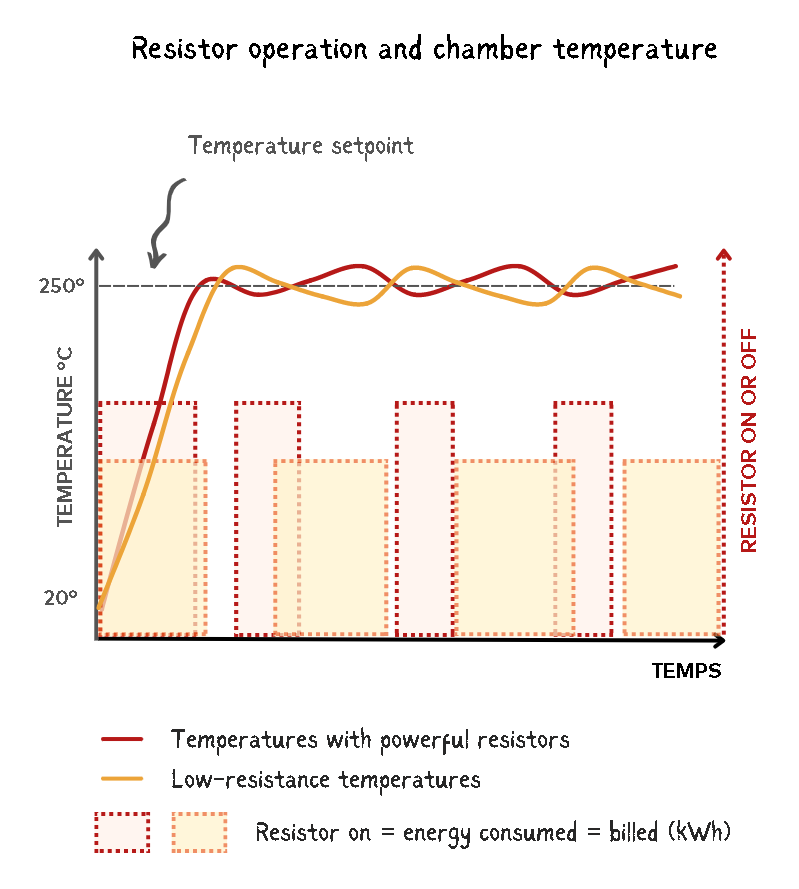
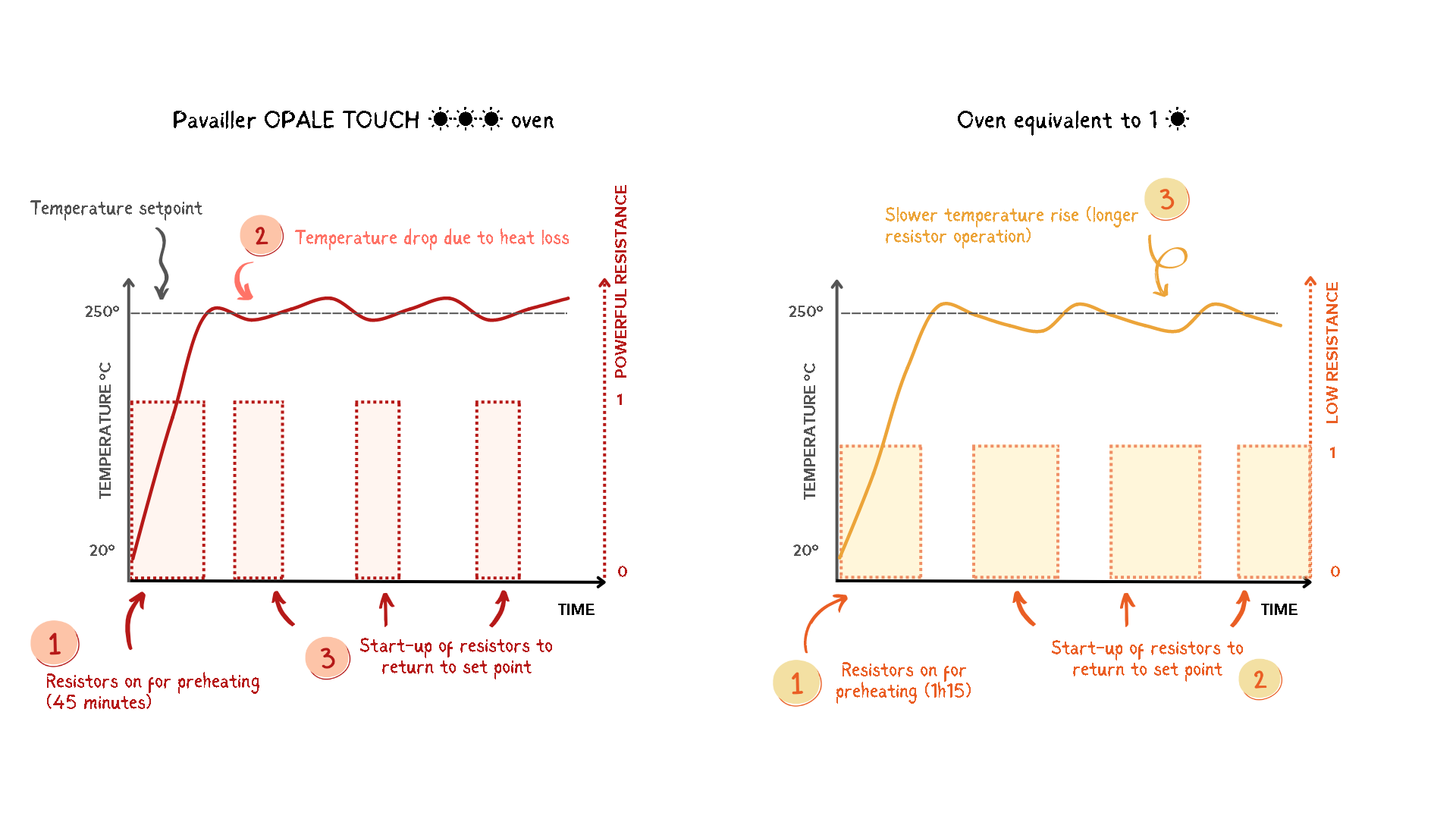
How can I reduce my electricity bill?
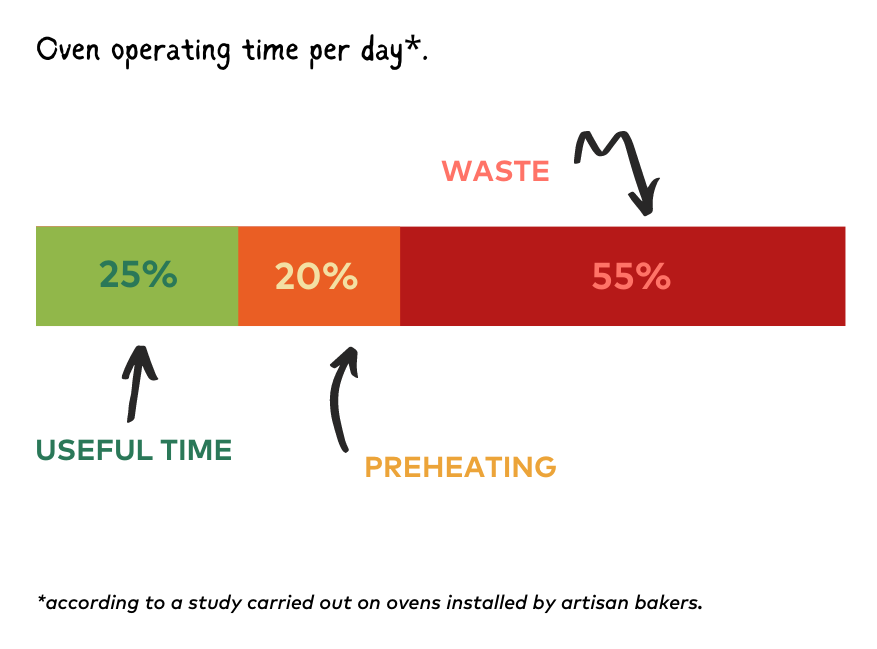
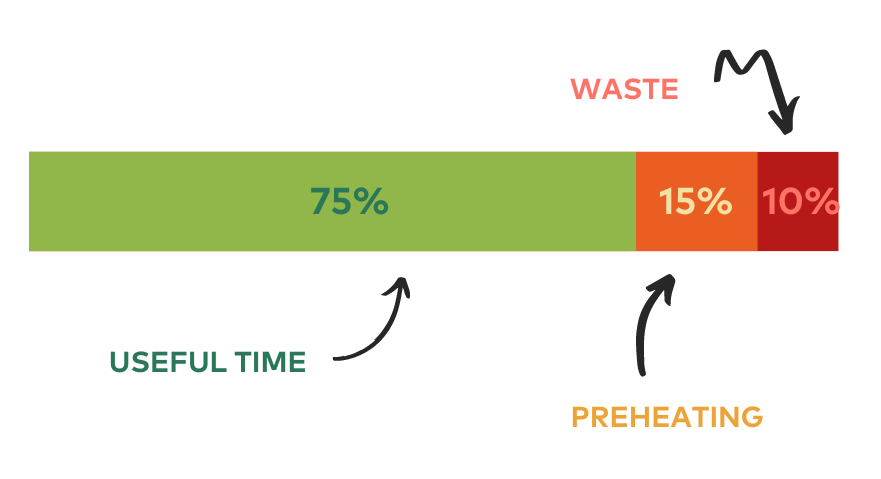
We know that the "useful time" is the time needed to bake the bread. It is therefore impossible to change this variable.
Preheating time, on the other hand, depends on the design of the oven: powerful resistors, efficient insulation...
You should therefore choose a well-insulated oven with resistors powerful enough for the oven's capacity.
Finally, "wastage" time can be greatly reduced. Simply switch off your oven after each use. It will come down in temperature (around 25° per hour), but the energy needed to bring it back up is always less than the energy saved.
💡An oven consumes less energy by being switched off (even for a few minutes) and then brought back up to temperature, rather than by remaining on continuously while heating.
The design of the oven and the effort made by the baker to turn it off could increase the useful time from 25% to 75%, and above all reduce waste from 55%* to 10%.
*according to a study carried out on ovens installed by artisan bakers.
Discover our tips for consuming less :
In addition :
How to optimize the use of your oven to use less and consume less?
FAQ
1. What is a "powerful" oven?
First of all, you need to understand that a powerful oven for a local craftsman is not the same as a powerful oven for a bakery producing for several sales outlets.
To adapt to your production, you've chosen an oven of a certain size (per m²). A powerful oven can be measured in kW/m², or even in baking capacity per m²: kg of bread/m²/h.
At Pavailler, an OPALE TOUCH☀️☀️☀️ can bake 18kg/m²/h, the best value on the market.
2. Should I switch off the oven between two batches, even if I don't use it for 30 minutes?
Yes, it's essential! Turning off your oven avoids energy waste and therefore reduces your energy consumption (your bill).
3. What is the purpose of the eco mode on my deck oven?
Eco mode allows you to prioritize floors that are not in "eco" mode. Eco mode is equivalent to using your floor as normal, while the others are boosted.
4. Why can't I see any difference on my Linky meter when my oven is in eco mode?
This is normal. The power used is always the same, the insulation is always the same, so consumption is identical.
The eco mode on our deck ovens allows us to prioritize floors that don't have this mode active. Floors without this mode are "boosted", while floors in eco mode operate normally.




